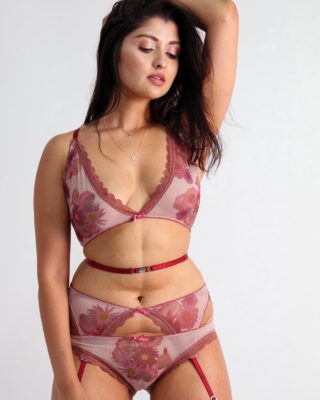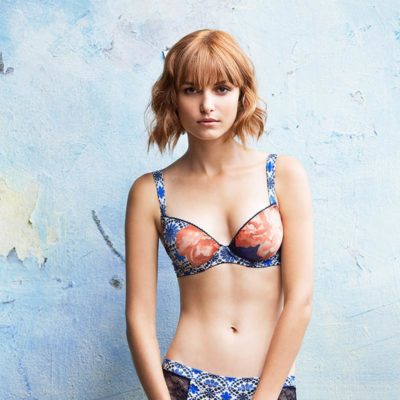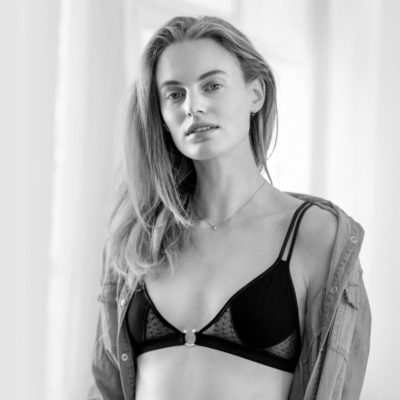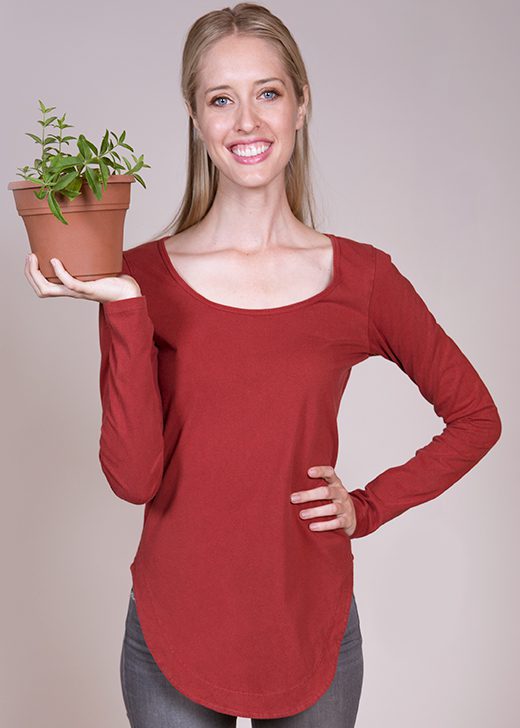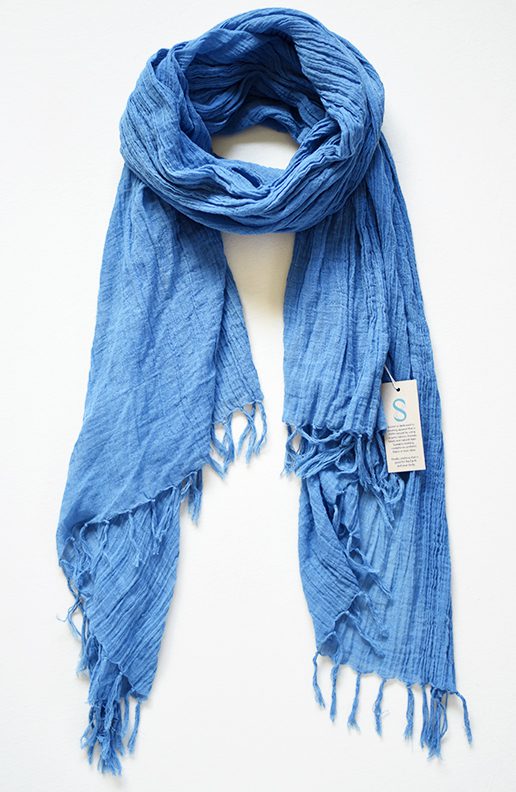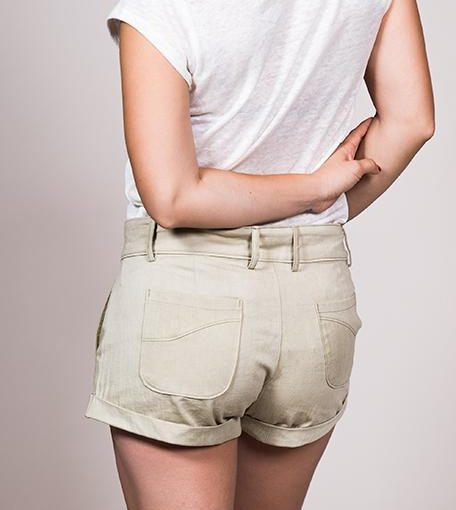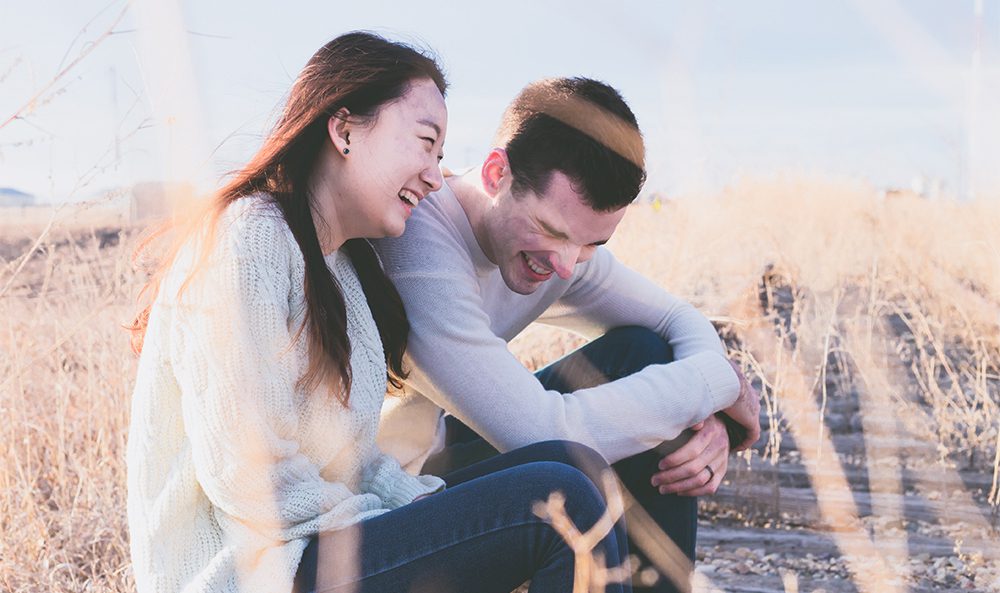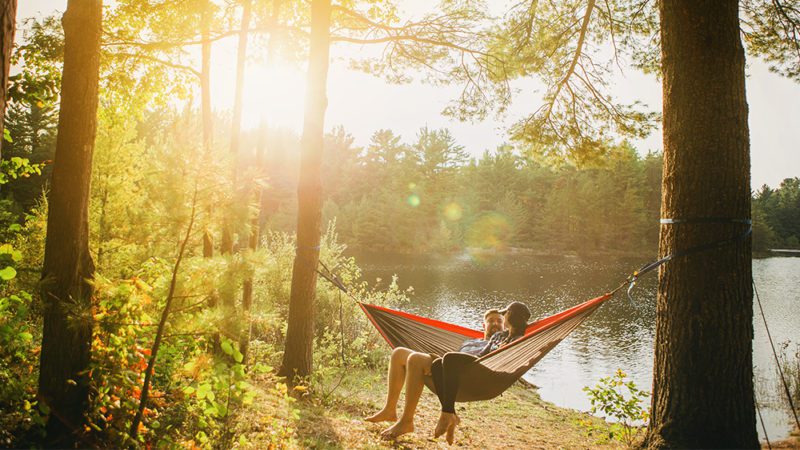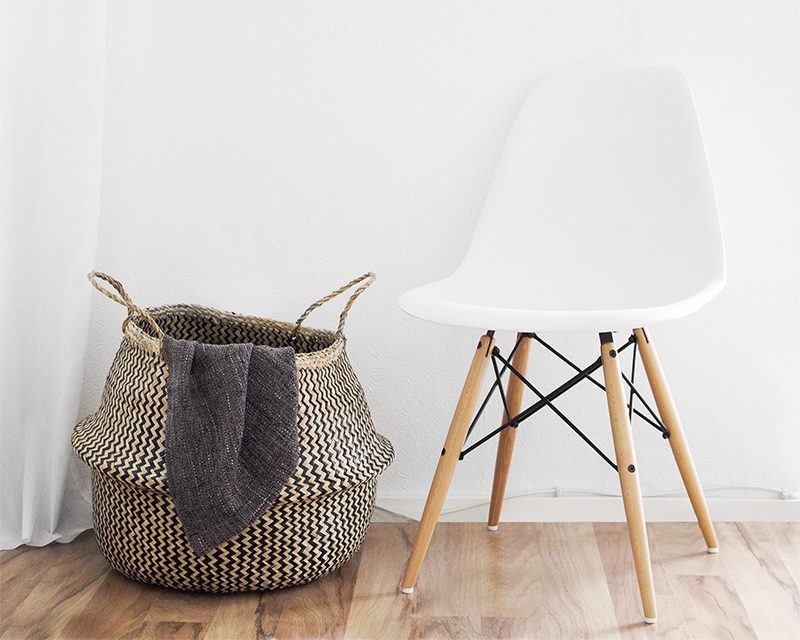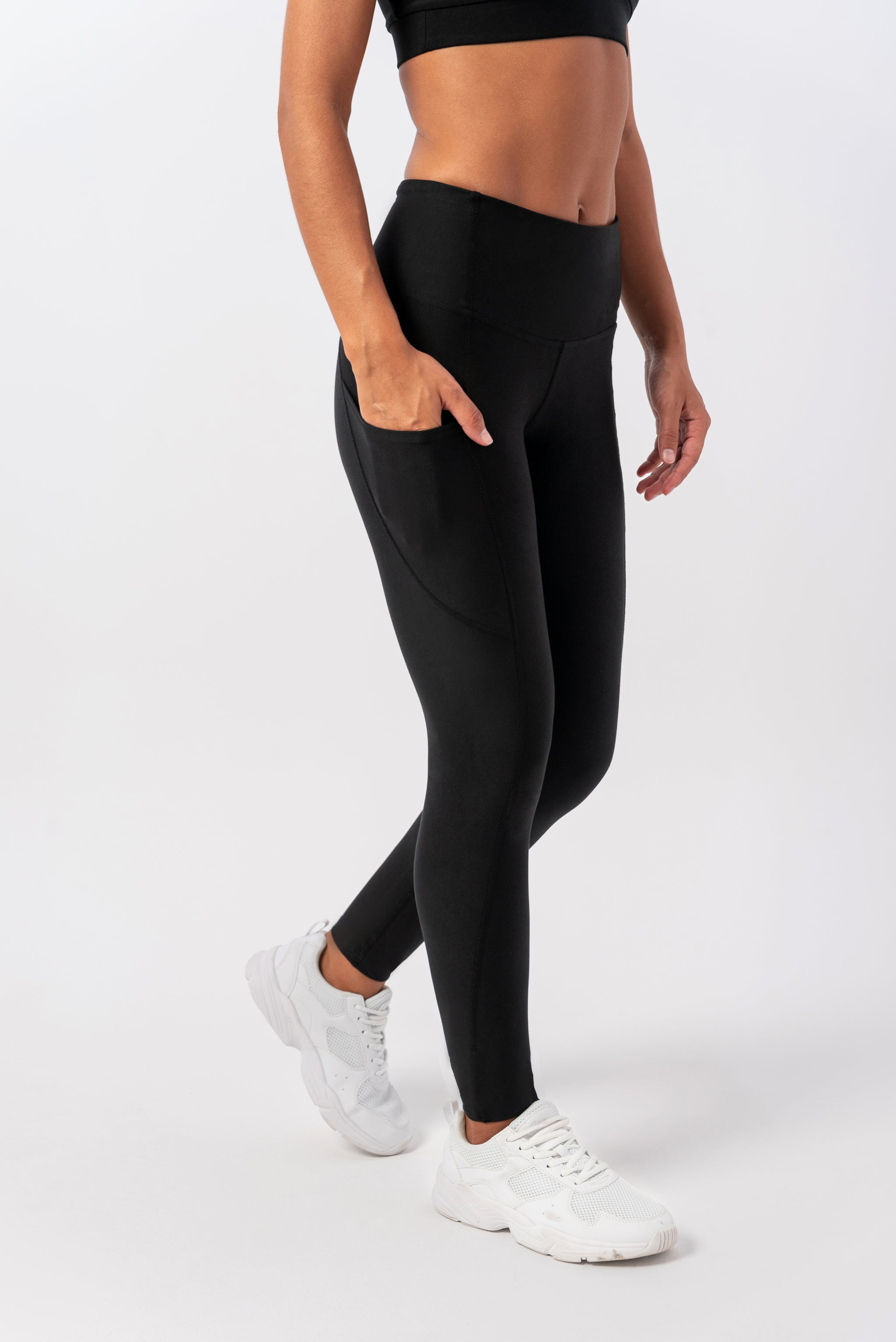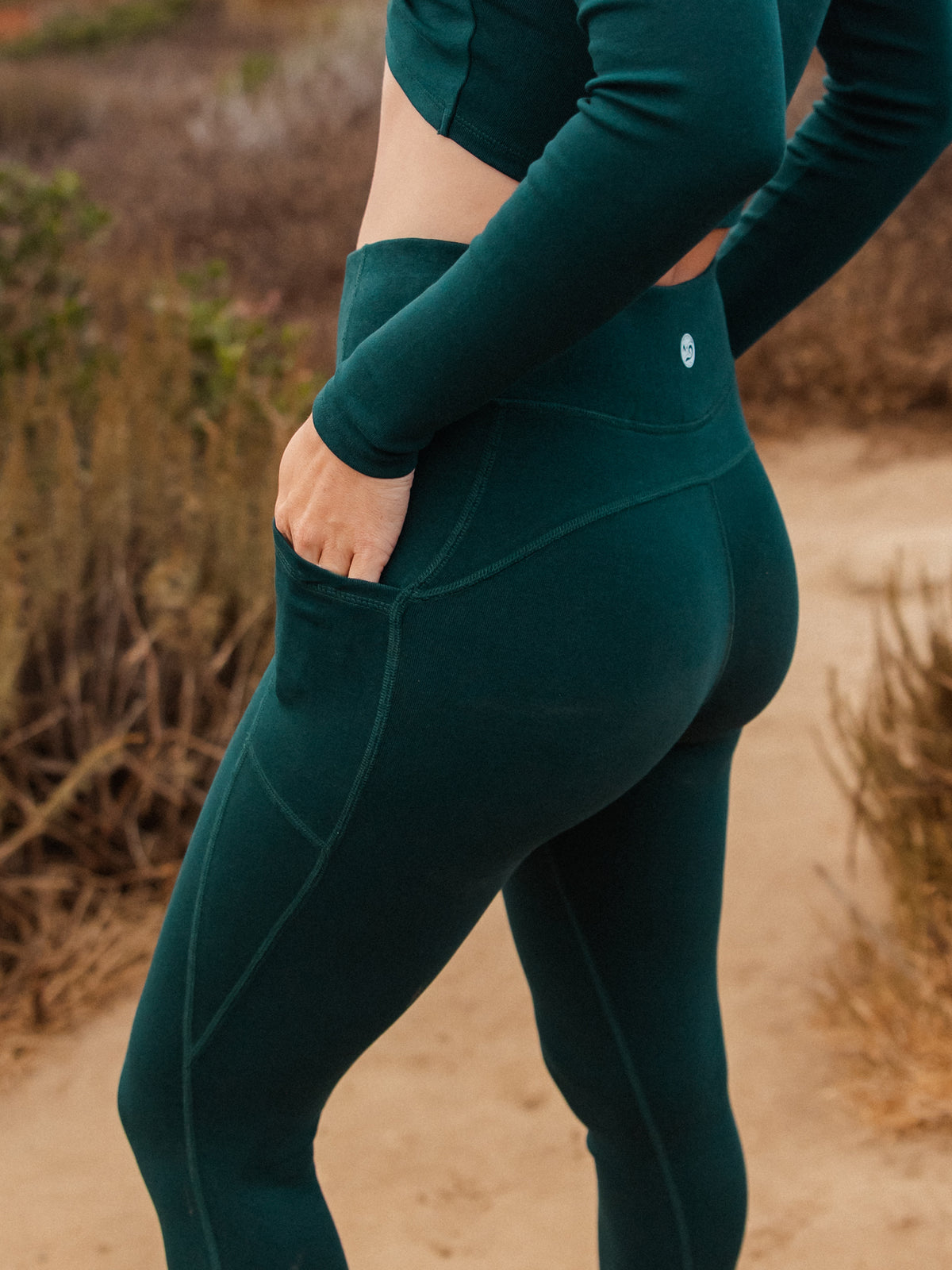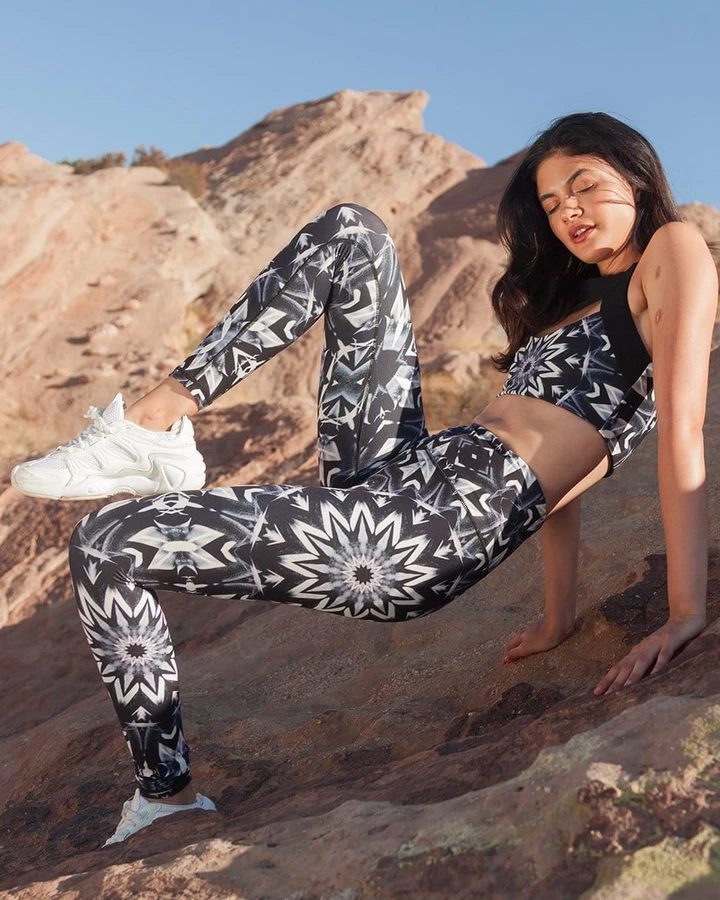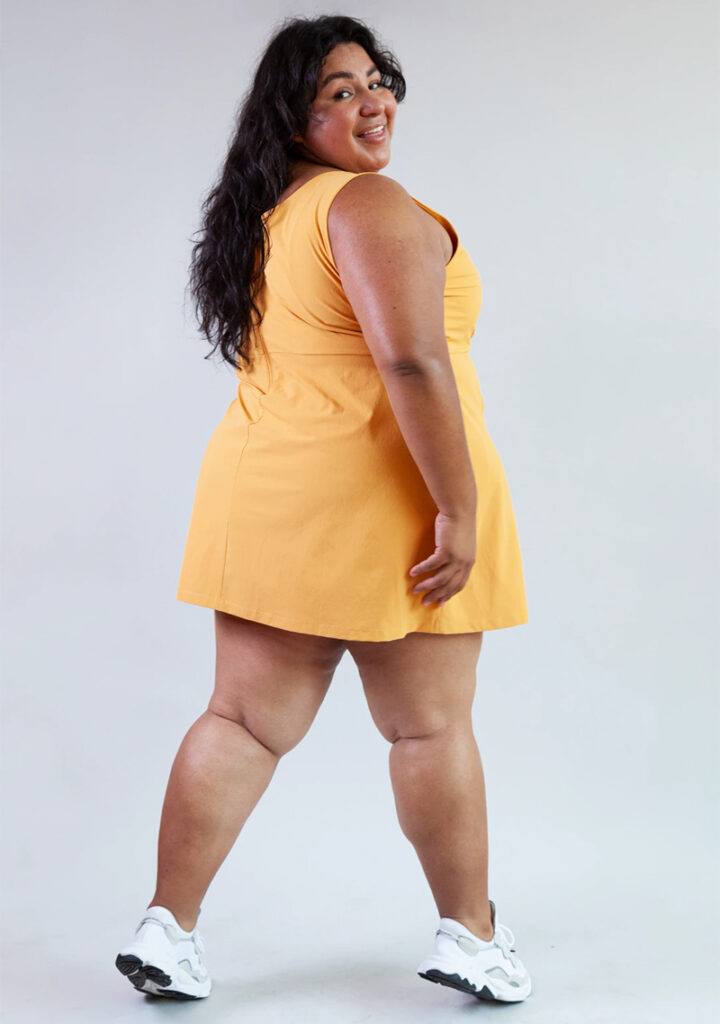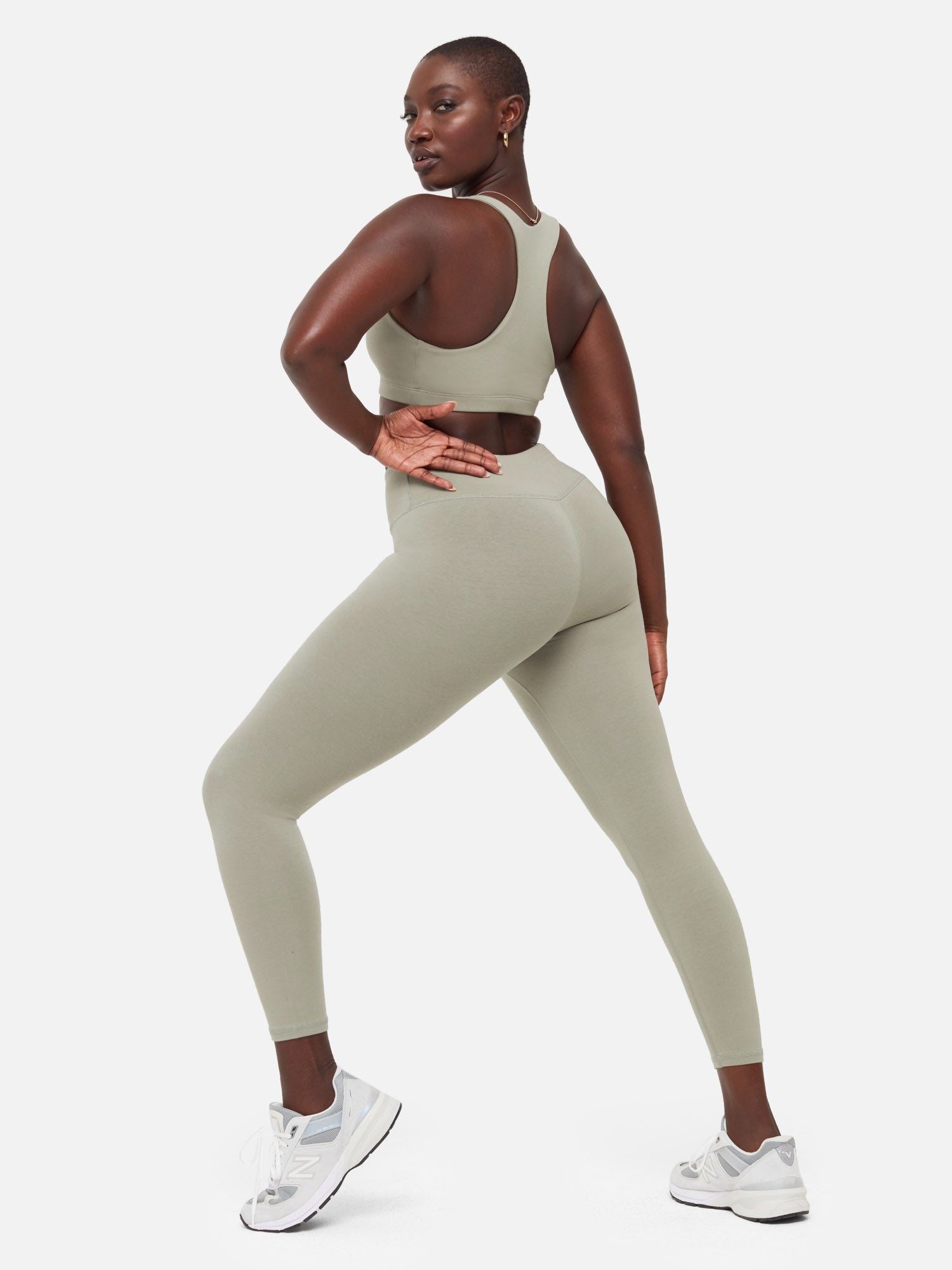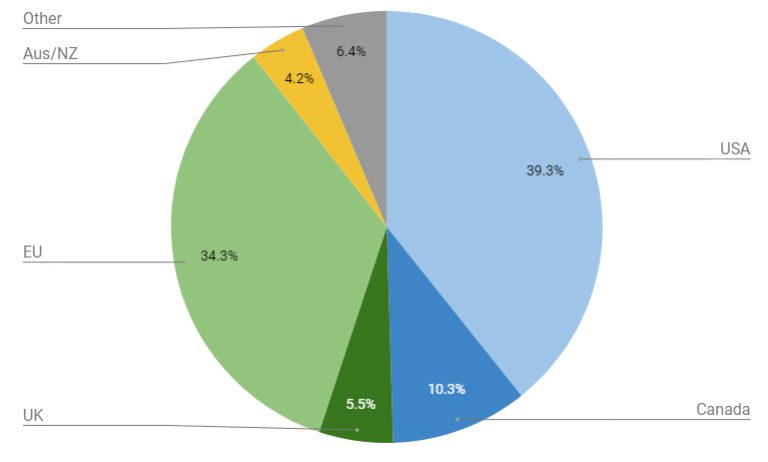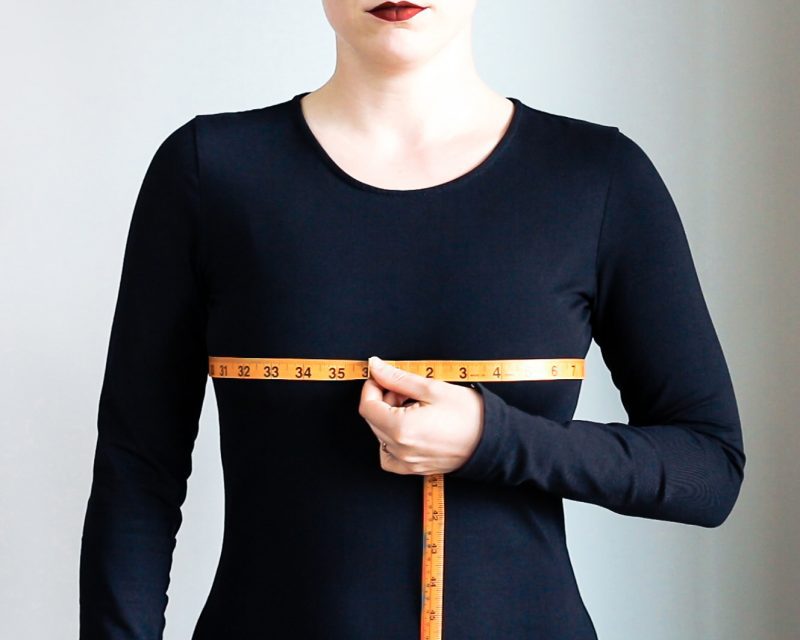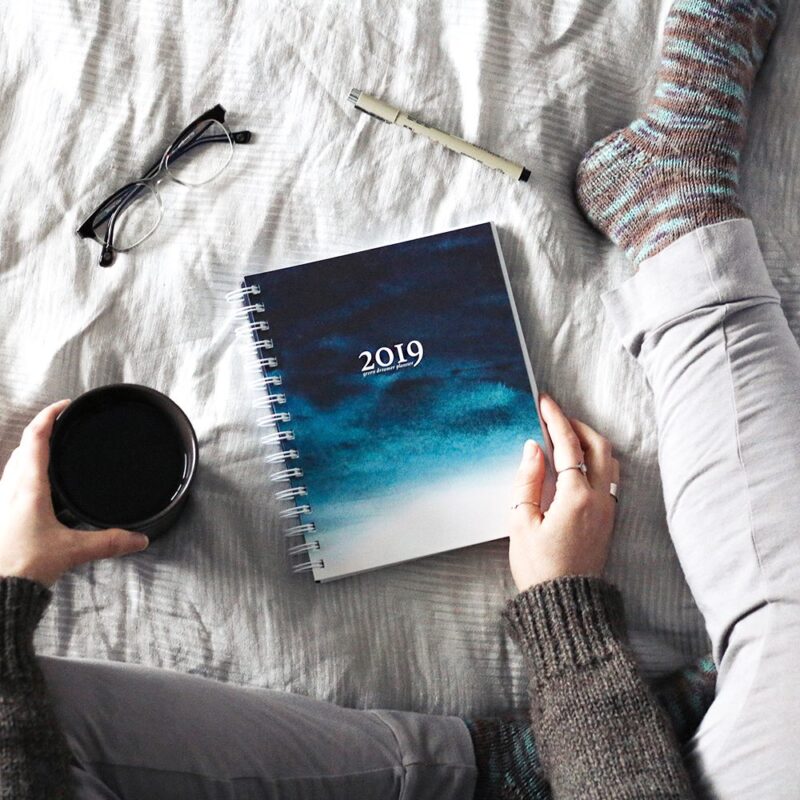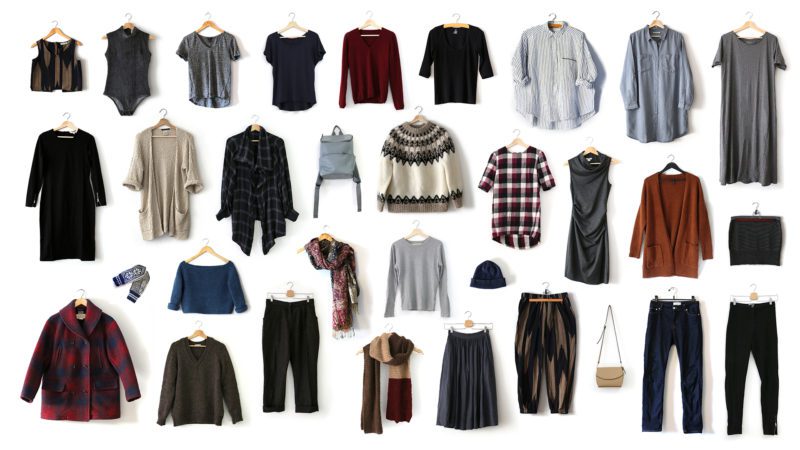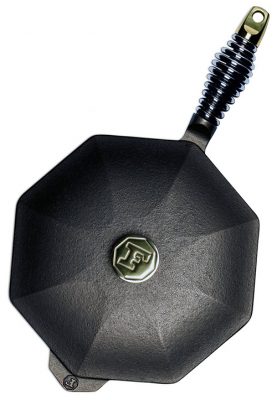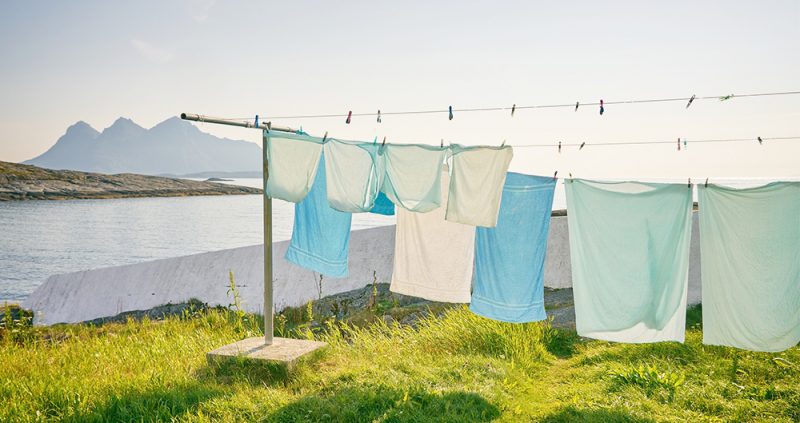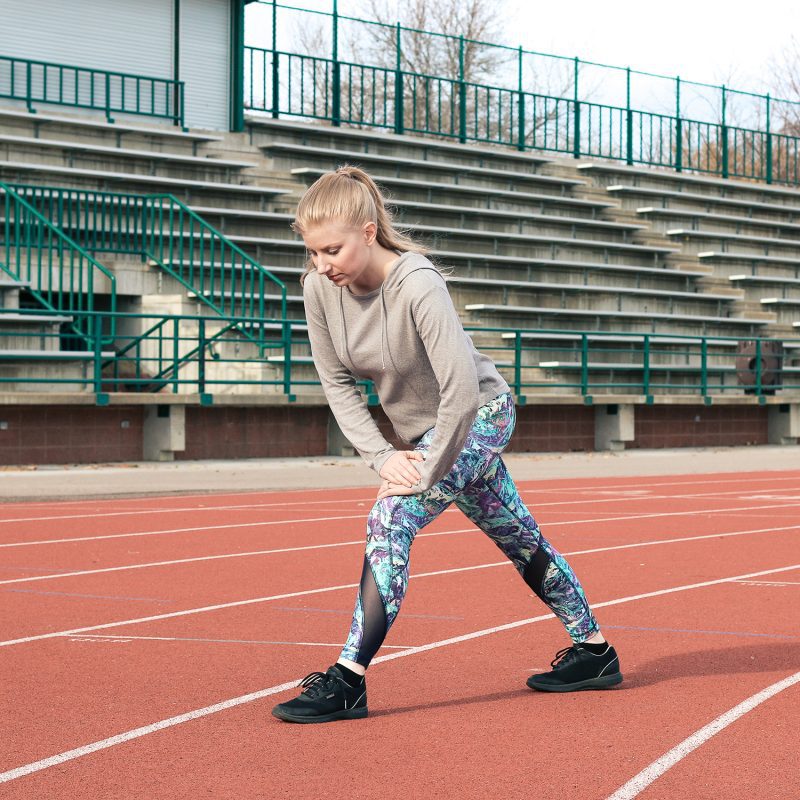16 Sustainable Bras & Bralettes for All Sizes
Bras are already challenging to find, which then makes ethical and sustainable bras even more difficult. Plus if like me you wear a “non-standard” size (for reference I typically wear a 30E) it can seem impossible. But I’m here to help!
This roundup includes ethical and sustainable bra brands from the US, Canada, the UK, Europe (EU), and Australia
You can also check out my video reviewing some of the bras I own, and here’s also a roundup of some organic and eco-friendly bra and lingerie brands to check out. ?
(please note: some affiliate links are used in this post which means we may get a small commission)
Sustainable Bras & Bralette Brands
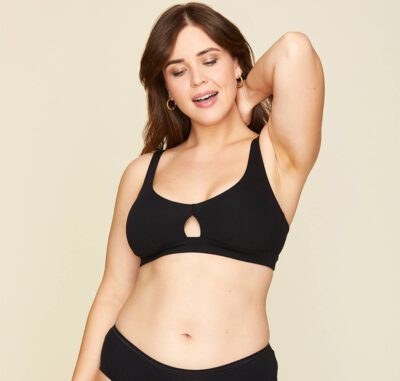
Subset (Formery Knickey)
One of my favourite underwear brands. Subset makes classic and comfy bralette styles from soft organic cotton in a fair trade certified factory.
Subset also has a virtual fitting room to help you get the best fit and also offers larger cup options in some of their bra styles.
Read an in-depth review of Subset here.
Size Range: XXS – XXXL
Values: GOTS certified organic cotton, Oeko-Tex certified, Fair Trade certified, sustainable packaging, body-inclusive models, take-back recycling program
Ordering: based in USA, ships to America and Canada

The Very Good Bra
If you’re looking for natural materials this is your bra! The Very Good Bra claims to be the world’s first zero waste bra – all components, even things like the elastics, labels, and hook/eye closures are naturally derived and the bra will biodegrade in your compost! While many eco brands just focus on the main material, TVGB goes the extra mile.
TVGB reinforces their fabric for added support so it’s a good option for something with more structure but I recommend paying attention and asking questions if you’re unsure of sizing.
Size range: 30C/32A – 38DD
Values: all natural materials, biodegradable
Ordering: based in Australia, ships international

Savara
Sustainable, gorgeous and super comfy? Savara checks all the boxes! Beautiful, lacy options can be challenging to find in the sustainable lingerie space, however Savara has filled that gap with stunning bras made with strong values.
Their bras and underwear are made from Tencel and reclaimed and deadstock lace. The pieces are ethically made in a low waste factory.
Savara has a unique sizing model and design which uses adjustable back elastics to combine the comfortable and flexibility of a bralette with the adjustability of a bra. Their bras are specifically designed to accommodate size changes and weight fluctuations.
Watch my review of their Willow bra.
Size range: XS – XXL+
Values: sustainable & reclaimed materials, production transparency, carbon offset
Ordering: based in the Netherlands, ships international
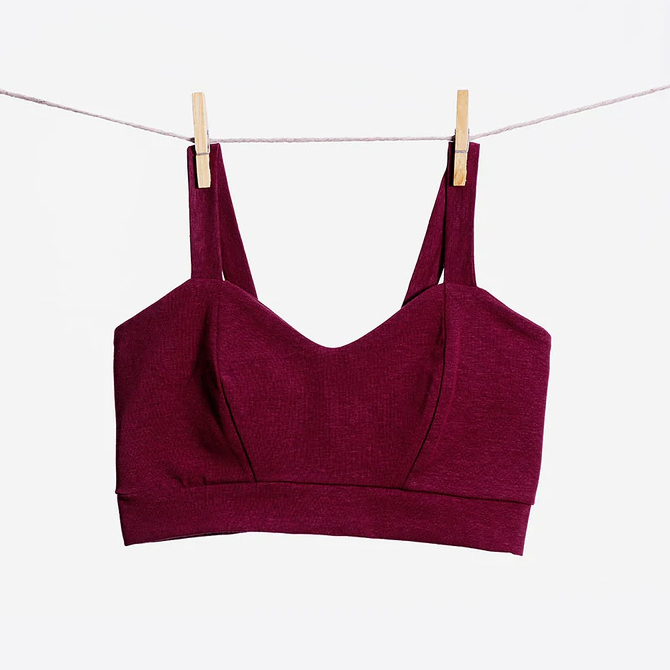
Earth and Elle
Earth and Elle set out to make sustainable and comfy organic bras and underwear – free from poky underwires, scratchy hooks and tight elastics. They use a soft and eco-friendly hemp and organic cotton blend fabric in a fully coverage cut that is both supportive and comfortable for lounging or everyday wear.
Earth and Elle’s pieces are made locally and they also use low impact dyes.
Size range: S – 3XL
Values: sustainable materials, small batch production, body-inclusive models, made in Canada
Ordering: based in Canada, ships to Canada, US, Mexico, Australia and New Zealand

Colie Co.
Cute and sexy sustainable lingerie. If you’re looking for unique and bold designs this is a brand to check out!
Colie Co. uses a variety of organic, recycled, and deadstock materials and each piece is made to order in-house in their Portuguese studio.
Size Range: XS – XL + custom & letter sizing
Values: reclaimed & sustainable materials, low waste production, made-to-order, sustainable packaging, ethically made in Portugal
Ordering: based in Portugal, ships international

Underprotection
Underprotection has a huge selection of bralettes, underwear, and lingerie, including lovely lacy items, made from recycle polyester and nylon. A great option if you’re looking for cute, sexy, and colourful bralettes!
Size range: XS – XL
Values: Sustainable materials, Recycled materials, Oeko-Tex certified fabrics, take-back recycling program,
Availability: Based in Denmark, ships worldwide
Uye Surana
Beautiful, feminine, and sexy lingerie made for a variety of shapes and sizes. Uye Surana‘s pieces are ethically made in NYC or a family-run factory in Colombia in small batches from a variety of materials (some sustainable, some not).
Size range: 28A – 42H + custom sizing
Values: small batch production, some reclaimed materials, body-inclusive models
Ordering: based in US, ships international
Organic Basics
Classic, comfortable wire-free bralette styles made from organic cotton and Tencel. Organic Basics, focuses on well-made, minimalist styles including some “invisible” bralettes made from recycled nylon and sustainable sports bra options.
Organic Basics has a solid set of certifications and sustainability initiatives and is a good example of brand transparency.
Size range: XXS – XXL
Values: GOTS certified organic cotton, certified factories (check out the various certifications each factory has here) production transparency, carbon offset, gives back
Ordering: based in Denmark, ships international

Free Label
Free Label’s longline bras are super comfy and supportive. The design is incredible versatile with many styles having reversible necklines and they can even be worn as a cute crop top!
Free Label ethically manufactures all their garments in Canada from a technical bamboo. They pay special attention to fit and designing styles to best suit (and support!) different bodies.
Watch my review of their Andie bra.
Check out our interview with Jess the owner of Free Label.
Size Range: XS – 4X (read the size chart carefully as their sizing is unique)
Values: sustainable materials (some), Oeko-Tex certified (bamboo), small batch production, body-inclusive models, made in Canada, gives back
Ordering: based in Canada, ships international

Luva Huva
Comfortable bralettes – all Luva Huva’s bras are made to order and they also offer custom sizes. Everything is made in-house in their Brighton studio, and they use a variety of sustainable materials as well as surplus/remnant fabrics and trims.
Size range: 30A – 40E + custom sizing
Values: sustainable materials, made in-house, made-to-order
Ordering: based in UK, ships international

Mary Young
Mary Young has a variety of colourful styles and sexy see-through cuts of bralettes, bodysuits, and lingerie all ethically made in Canada from bamboo fabric and nylon mesh.
They have both a Canadian site and US site.
Size Range: XS – 2X
Values: some sustainable materials, Oeko-Tex certified (bamboo), body-inclusive models, made in Canada
Ordering: based in Canada, ships international
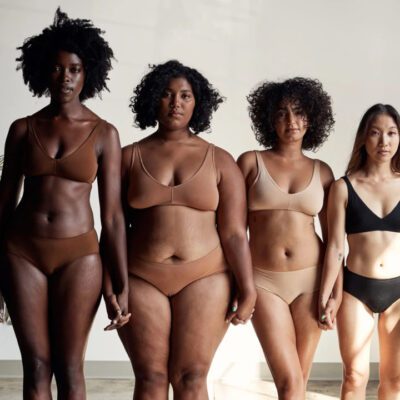
Proclaim
Proclaim is all about nude. Their bralette comes in 3 nude shades plus black and some fun color options. Made in Los Angeles from recycled plastic water bottles.
Size range: S – 3X
Values: recycled materials, ethically made in LA, body-inclusive models
Ordering: based in US, also ships to Canada, Australia and the UK

Anekdot
Using all surplus, deadstock, and reclaimed materials, Anekdot creates beautiful bra and pantie sets, locally made in Berlin or their factory in Poland.
Size range: XS – L
Values: reclaimed materials, ethically made in Berlin or Poland
Ordering: based in Germany, ships international
Nico
One of the few sustainable bra brands who offer both underwire and wire-free styles. Nico uses mainly Lenzing modal and recycled cotton and their products are made in Australia or in their GOTS certified (working on fair trade certification) factory in India.
Size range: 30A – 36DD
Values: sustainable materials, made in Australia and GOTS certified factory in India
Ordering: based in Australia, ships international
Naja
I wanted to include Naja because they are one of the few brands offering molded-cup bras. While not all their products are sustainable they do have an eco-friendly bra collection made from recycled synthetics and a zero waste collection made from reclaimed fabric.
Size range: 32B – 36DD (in eco bras)
Values: some sustainable materials, factory primarily employs single mothers
Ordering: based in US, ships international
Aikyou
Specializing in sustainable bras and lingerie for small busts. Aikyou uses primarily organic cotton and their pieces are sewn in a fair trade factory in Croatia. They are also in the process of getting GOTS certified.
Size range: XS – L
Values: organic cotton, fair trade certified factory, vegan brand
Ordering: based in Germany, ships international
Looking for sports bras? Check out our top sustainable activewear brands.
Or maybe you’re looking for nursing bras? We have a roundup of those too!
And also check out our underwear round-up for your bottom half.
Are there any eco bras I missed that you love?

